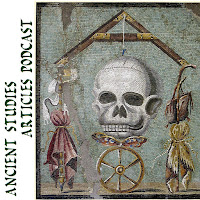This podcast ventures into the exciting realm of digital humanities by taking a look at the aims and methods of the
HESTIA Project! We will read
Elton Barker (Principal Investigator),
Stefan Bouzarovski (Co-Investigator),
Chris Pelling (Co-Investigator) and
Leif Isaksen (ICT Consultant)'s 2010 article, "Mapping an ancient historian in a digital age: the Herodotus Encoded Space-Text-Image Archive (HESTIA)."

ABSTRACT: "HESTIA (the Herodotus Encoded Space-Text-Imaging Archive) employs the latest digital technology to develop an innovative methodology to the study of spatial data in Herodotus’ Histories. Using a digital text of Herodotus, freely available from the Perseus on-line library, to capture all the place-names mentioned in the narrative, we construct a database to house that information and represent it in a series of mapping applications, such as GIS,

GoogleEarth and GoogleMap Timeline. As a collaboration of academics from the disciplines of Classics, Geography, and Archaeological Computing, HESTIA has the twin aim of investigating the ways geography is represented in the Histories and of bringing Herodotus’ world into people’s homes."
The Article
Itself.
Link to the
Leeds International Classical Studies Journal
Podcast Link.
Links to Some Other Projects Mentioned in the Article:
1
. Perseus Project
2.
PostgreSQL
3.
PostGIS
4.
TimeMap
5.
Nick Rabinowitz's Blog







